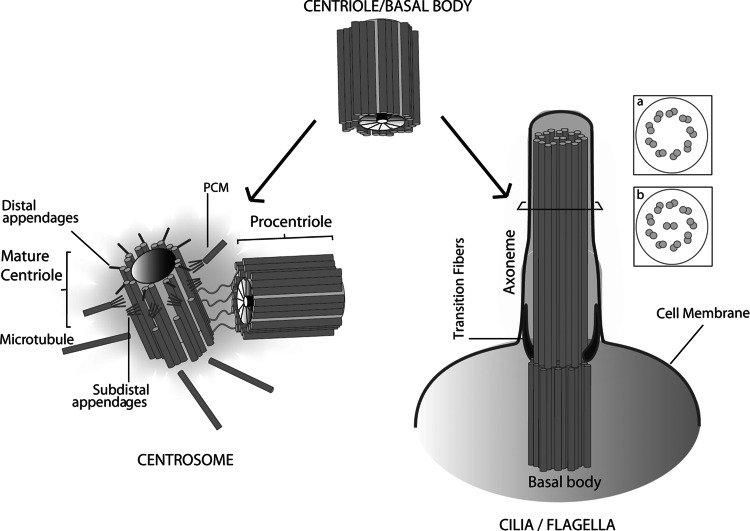Fig. 1.
Centriole/basal body structure and function. The centriole/basal body is a structural constituent of the centrosome and of cilia and/or flagella. The canonical centriole has nine MT triplets and is ~0.5 μm long and 0.2 μm in diameter. Each centrosome is composed of a mother and daughter centriole, in an orthogonal configuration, surrounded by a matrix of proteins, the pericentriolar material (PCM). The older mother shows appendages, where Mts are docked. In certain cells, the centriole migrates and tethers to the membrane via its appendages and seeds the growth of cilia and flagella that enable cell movement and/or chemoreception. The skeleton of cilia and flagella, called the axoneme, results from a continuation of the basal body structure and might be composed of nine doublets with no central pair (a) as it is in the case of most immotile cilia; or nine MT doublets with a central MT pair as it is for most motile cilia (b)

